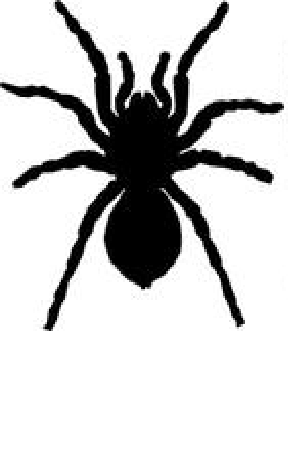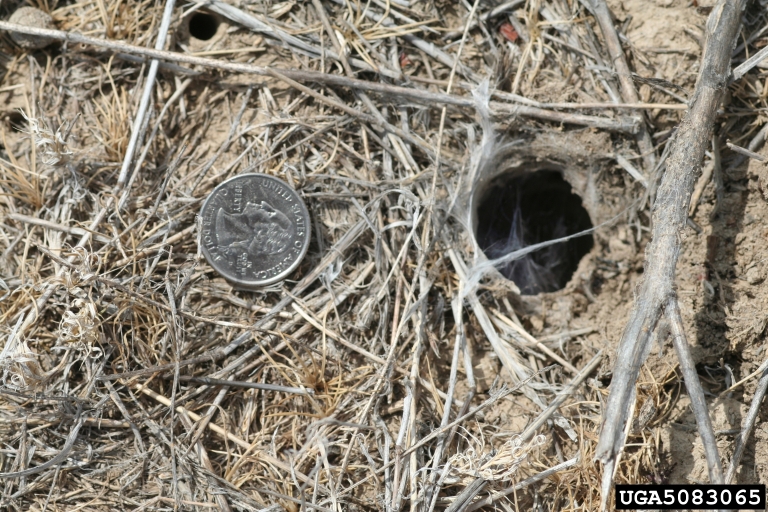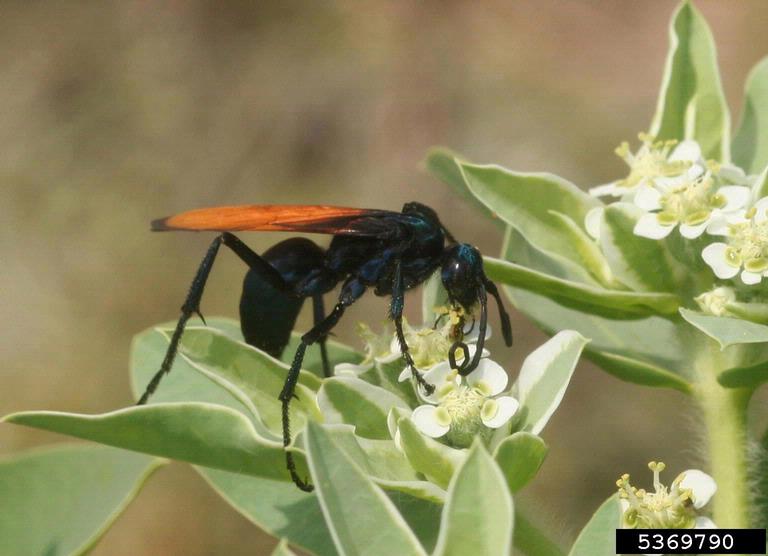 Appreciating Tarantulas - August 23, 2017 Jeff Schalau, Agent, Agriculture & Natural Resources University of Arizona Cooperative Extension, Yavapai County Most Arizona residents have encountered and observed tarantulas while recreating or working outdoors. The uninitiated are often frightened by these large hairy spiders, but after the initial shock wears off, its easy to see these harmless spiders pose no threat. Fear can get in the way of tarantula appreciation, but, hopefully this column will help all but true arachnophobes appreciate/tolerate them. Tarantulas are the largest of all spiders and 30 species are known to live in Arizona. Adults range in size from 2-4 inches (510 cm). Typically, tarantulas of all species are light to dark brown in color and the abdomen and legs are densely covered with hair. Large tarantulas can weigh in at over 1.1 ounce (30 gm). Yes, tarantulas possess fangs and are venomous, but they do not bite unless seriously provoked. There are no records of serious harm to humans resulting from tarantula bites. In the Southwest, tarantulas spend most of their lives on or in the ground. They dig burrows when they are spiderlings and live in them for many years, enlarging them as necessary. Once established at a site, an individual tarantula usually spends its life there, hunting in an area only a few meters adjacent to its burrow. They are nocturnal and usually remain hidden during day. Tarantulas may feed on cockroaches, crickets, grasshoppers, and newborn mice. Female tarantulas may live as long as 35 years and males are shorter-lived. After 810 years, male tarantulas migrate in search of mates between June and October. Courtship involves cautious approach by the male, who touches the female with his front legs, then moves in a way that identifies both his gender and species. If the female is receptive to his advances, she abandons her burrow and ultimately raises the front section of her body (cephalothorax). She remains inactive while the male approaches her from the front. He uses special hooks on the first pair of his walking legs to hold the female's fangs at bay during insemination. After the sperm have been deposited in the female's abdominal genital opening, the male disengages his hooks and departs briskly. The males usually die a short time after mating. When molested, tarantulas have two defensive strategies that are employed against enemies. First, an aggravated spider will throw itself back on its haunches, thus elevating its cephalothorax and exposing its large fangs. If the harassment persists, the spider will attempt to bite its adversary. Another deterrent to its potential predators are specialized hairs on the top rear of the animal's abdomen. These are called urticating hairs that contain venom. When molested, the spider elevates its abdomen slightly and employs its hind legs to brush these hairs rapidly from the abdomen. The action of the hind legs creates a small cloud of extremely fine hairs, which can cause severe irritation when they contact mucous membranes of mammals, including humans. While armed against enemies, tarantulas can still fall prey to a variety of generalist predators including birds, lizards, snakes, frogs, toads, skunks, coatimundis, and javelina. Even more interesting are the insects that parasitize tarantulas. Both small-headed flies (family Acroceridae) and tarantula hawks (wasps in the family Pompilidae) parasitize these large spiders. Acrocerids lay their eggs on the spiders; when the eggs hatch, the larvae enter the body of the spider and consume internal organs. Tarantula hawk females first sting the spider, paralyzing it, then lay an egg on it before burying it. The wasp larva feeds on the paralyzed tarantula which may remain alive for several months while being consumed. People often encounter wandering male tarantulas, and in some cases, they enter dwellings, sometimes causing alarm. If one should wander into your home, it can be swept up in a dust pan, emptied into a full-size grocery bag or cardboard box and released outside the house. Tarantulas are not aggressive and, with gentle handling, will not become agitated. The container used to transport the tarantula may have some urticating hairs in it, so it should be discarded after the spider is released. See below for photos and additional information. Follow the Backyard Gardener on Twitter use the link on the BYG website. If you have other gardening questions, call the Master Gardener help line in the Camp Verde office at 928-554-8992 or e-mail us at verdevalleymg@gmail.com and be sure to include your name, address and phone number. Find past Backyard Gardener columns or provide feedback at the Backyard Gardener web site: http://cals.arizona.edu/yavapai/anr/hort/byg/. Photos  Oklahoma brown tarantula (Aphonopelma hentzi, Whitney Cranshaw, Colorado State University, Bugwood.org).
Oklahoma brown tarantula (Aphonopelma hentzi, Whitney Cranshaw, Colorado State University, Bugwood.org). Oklahoma brown tarantula burrow opening (Whitney Cranshaw, Colorado State University, Bugwood.org).
Oklahoma brown tarantula burrow opening (Whitney Cranshaw, Colorado State University, Bugwood.org). Tarantula hawk (Pepsis mildei, Whitney Cranshaw, Colorado State University, Bugwood.org).
Tarantula hawk (Pepsis mildei, Whitney Cranshaw, Colorado State University, Bugwood.org).Additional Resources Spiders - Tarantulas University of Missouri Extension extension.missouri.edu/p/g7386-7 Tarantula Fact Sheet Arizona - Sonoran Desert Museum www.desertmuseum.org/kids/oz/long-fact-sheets/tarantula.php |